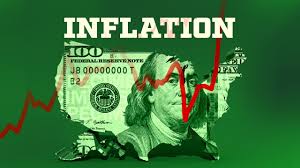The numbers: U.S. consumer prices rose a modest 0.2% in June and the rate of inflation slowed to the lowest level since 2021, but recent progress might not enough to stop the Federal Reserve from raising interest rates soon.
The increase in consumer prices last month was smaller than the 0.3% forecast of economists polled by the Wall Street Journal.
The yearly rate of inflation decelerated to 3% from 4% in the prior month. The last time inflation was this low was in March 2021.
Stock rose after the report. Treasury yields fell and the U.S. dollar slipped.
The decline in inflation is not quite as fast as it seems, however.
Grocery and gasoline prices have retreated this year and accounted for a large part of the slowdown, for one thing. And some huge monthly increases in consumer prices in 2022 have dropped out of the yearly calculation of the inflation rate.
Still, the so-called core rate of inflation that omits food and energy also rose a mild 0.2% last month, the government reported. That’s the smallest increase in almost two years. Wall Street had forecast a 0.3% gain.
The Fed views the core rate as a better predictor of inflation trends. The increase in the core rate over the past 12 months slid to 4.8% from 5.3%, but it’s still well above the central bank’s 2% target and has remained stubbornly high.
The Fed is widely expected to raise its benchmark short-term interest rate at its next meeting July 25-26. The bank paused in June to assess how much its prior rate hikes have slowed inflation and the broader economy.
Key details: The rate of inflation was held in check in June largely by falling airline fares and used-car prices.
The cost of plane tickets sank 8.1% and dropped for the third month in row. Used-vehicles prices slid 0.5% in June and are down 5% in the past year.
The cost of groceries were unchanged in June. Food prices have risen 4.7% in the past year, down sharply from a 13.5% pace a year earlier.
The cost of eating out or getting takeout is still rising rapidly, however.
Housing, the single biggest category of the CPI, remained the biggest sore spot on the inflation front. Rents rose again and they are up 8.3% in the past year.
Rents appear to have tapered off recently, however, and that should show up in the CPI later this year.
If so, the rate of inflation could slow further in the second half of 2023.
Big picture: Inflation is coming down. The rate of price increases has been more than halved after hitting a 40-year high of 9.1% last year.
Yet inflation is not slowing fast enough to dissuade the Fed from raising interest rates one or two more times this year.
Senior Fed officials are worried a shortage of labor is driving wage higher and making it harder to get inflation under control. They also worry that housing costs — the single biggest influence on inflation — might not slow as quickly as they had expected.
That’s why the Fed is ready to raise a key short-term rate later this month after pausing in June for the first time in 11 meetings. The central bank has jacked up the rate to a top end of 5.25% from near zero a year and a half ago.
Higher borrowing costs slow inflation by slowing the economy, but they also raise the risk of recession.
Looking ahead: The Fed will see June’s CPI report as progress toward their inflation target,” said chief economist Bill Adams of Comerica. “But the Fed will probably still hike at their decision at the end of the month after hot wage growth in the June jobs report.
“Prices for everything from eggs to used cars dropped in June, causing a big deflation in inflation,” said corporate economist Robert Frick of Navy Federal Credit Union. “By one measure, inflation is just one-third of what it was a year ago. However, this is not yet a turning point. Core inflation will prove tougher to beat.”











